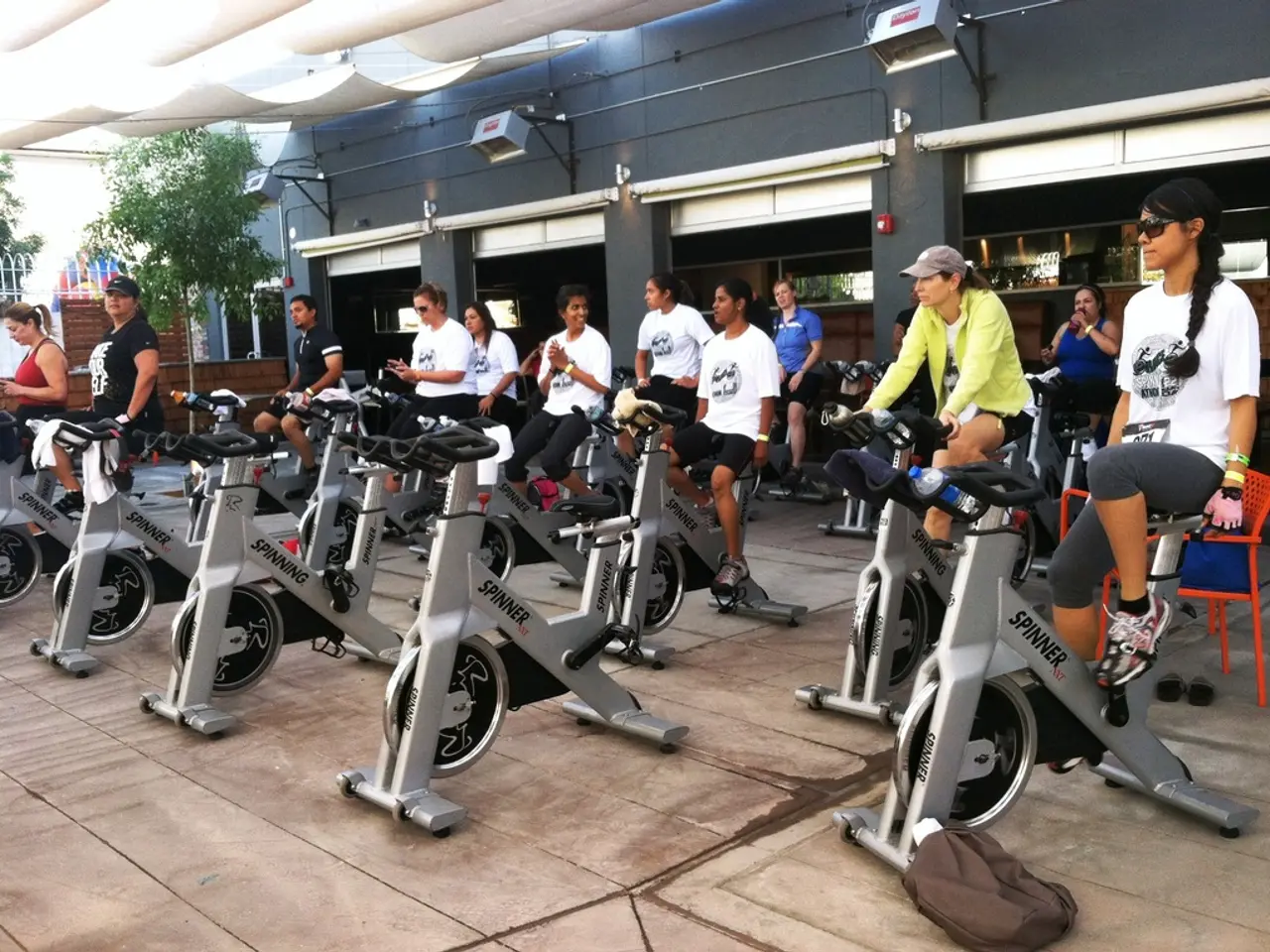Engage in prolonged periods of sedentary behavior?
Embracing physical activity is a crucial step towards a healthier lifestyle, and the World Health Organization (WHO) advises that every bit of movement is better than none. Here's a guide to help you incorporate more daily physical activity and build sustainable exercise habits.
The WHO's guidelines for physical activity apply to adults, and they recommend engaging in at least 150 minutes of moderate-intensity physical activity per week. This could be as simple as brisk walking or relaxed cycling. To make this achievable, start by choosing enjoyable activities and aim to move at least 150 minutes per week.
Begin with small, manageable increments of time—such as 5 to 20 minutes daily—and gradually increase to 30 minutes or more. Establishing a set routine by scheduling exercise sessions at regular times increases adherence, and mixing different activities like walking, yoga, or dancing can boost motivation and prevent burnout.
Effective strategies to help you stick to your new routine include habit stacking—pairing exercise with existing daily habits, such as stretching while watching TV or walking during breaks at work. Variety and progression are also key, as alternating between cardio, strength training, and flexibility exercises engages different muscle groups and keeps the routine interesting.
For beginners, structured home workouts focusing on basic bodyweight exercises like wall push-ups, squats, and planks can build foundational strength and endurance. Making physical activity social by exercising with friends or family can enhance enjoyment and accountability.
Incorporating movement into everyday tasks is another great way to increase your daily activity totals. For example, walking the dog, cleaning the house, or exploring nature trails can all contribute meaningfully to your weekly exercise goals.
Consistency is key. It's better to have short, regular sessions tailored to your lifestyle and preferences than sporadic intense workouts. Over time, this approach ingrains movement into your daily life, improving overall fitness, mental health, and body functionality.
Engaging in a sport you enjoy can lay the foundation for sticking with it in the long term. Mentally blocking excuses presented by the inner procrastinator can help stay motivated for exercise.
Adults should include muscle-strengthening activities on at least two days a week. Examples of muscle-strengthening activities include exercises using one's own body weight, such as push-ups.
Additionally, taking the stairs instead of the elevator or escalator, parking the car further away, and going up and down the stairs a few times as a small workout are all simple ways to increase daily movement. Walking or cycling to work, supermarket, or appointments can also contribute to your weekly exercise goals.
Building habits such as daily yoga or running at the same time and place can help establish a regular exercise routine. Combining phone calls with a few steps of movement can be a way to increase daily movement without disrupting your schedule. Packing the sports bag the evening before, inflating the bicycle tire, or rolling out the yoga mat in the living room can remove obstacles to regular exercise.
In conclusion, the benefits of physical activity extend far beyond reducing the risk of numerous diseases. By incorporating movement into your daily life, you can reduce stress, improve your overall health, and create a more enjoyable lifestyle. Embrace the power of movement and start your journey towards a healthier you today!
Engaging in muscle-strengthening activities like push-ups, as recommended by the WHO, can strengthen your body and contribute to your health-and-wellness. To achieve the WHO's guidelines for physical activity, you can combine various activities such as walking, yoga, and cycling, ensuring you reach at least 150 minutes of moderate-intensity physical activity per week. This routine not only fosters fitness-and-exercise but also improves your mental health and overall lifestyle.




